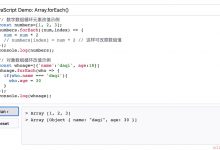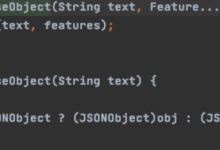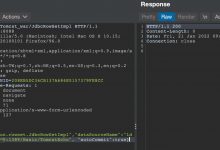
样例
<script src=\"./p5/p5.js\"></script><script>function setup() {// 只写一次你想做的事createCanvas(400, 400);}function draw() {// 写下你要重复的内容// 每秒约60次速度重复background(220);ellipse(50,50,80,80);}</script>
-
createCanvas(width,height)
创建canvas
-
ellipse(x,y,cx的直径,cy的直径)
椭圆
-
background()
一个参数: 0-255 0表示纯黑色 255白色
- 三个参数 rgb
circle(x,y,直径)
圆
通过查看源码可知x,y,w,[h],[tl],[tr],[br],[bl][] 是可选参数分别是 高,左上圆角,右上,右下,下左三个参数是圆react(20,20,width,height)四个参数是长方形或者正方形react(20,20,width,height,border-radius)五个参数是有圆角的长方形或者正方形两个圆角就是对角(50,10) 就是上左,下右 50, 上右,下左 10三个圆角就是(50,30,5) 上左50,上右30, 下右,下左5
-
line(起点x,起点y,终点x,终点y)
直线
-
square(x,y,边长)
正方形
-
triangle(x1,y1,x2,y2,x3,y3 )
三角形
-
quad( x1, y1, x2,y2,x3,y3,x4,y4 )
四边形
-
fill()
一个参数是亮点(0-255)
-
一个参数 SVG/CSS
fill(\'red\')fill(\'#fae\')fill(\'#222222\')fill(\'rgb(0,255,0)\')fill(\'rgba(0,255,0, 0.25)\')fill(\'rgb(100%,0%,10%)\')fill(\'rgba(100%,0%,100%,0.5)\')// p5 colorfill(color(0, 0, 255));
-
三个参数
RGB
-
三个参数
HSB
* colorMode(HSB);* fill(255, 204, 100);
stroke()
- 一个参数亮点(0-255),三个RGB
strokeWeight(number)
noStroke()
noFill()
demo
function setup() {createCanvas(600, 200);}function draw() {background(220);fill(230, 128, 255); // 青色circle(100, 100, 80);stroke(255, 128, 0);circle(200, 100, 80);fill(200)strokeWeight(10);circle(300, 100, 80);noFill();strokeWeight(5);stroke(123);circle(400, 100, 80);}

结论: 设置填充后,如果没有再次设置这个属性,将一直保持这个设置
noLoop() 功能
setup
设置了一个
noLoop()
,只执行一次
如果我们把
draw()
函数,里面执行一个
noLoop()
就只执行一次
变量的书写
let dia = 60;function setup() {createCanvas(400, 200);background(220);noLoop();}function draw() {fill(128, 128, 0);noStroke();circle(100, 100, dia);circle(200, 100, dia);circle(300, 100, dia);}
应该写在函数的外面
打印函数
print()
或者
console.log()
编写一个动画
let dia = 0;function setup() {createCanvas(400, 200);strokeWeight(2);}function draw() {if(dia>400){noLoop()}background(220);circle(dia,100,50)dia+=0.5;}

鼠标事件
按下的按钮
mouseIsPressed
返回boolean
按下按钮类型
mouseButton
返回鼠标左键,鼠标右键,鼠标中间滚轮
\'left\',\'right\',\'center\'
大写表示直接可以拿到的全局变量
LEFT,RIGHT,CENTER
当前指针坐标(
mouseX,mouseY
)
demo
function setup() {createCanvas(500, 500);background(220);stroke(220); // 设置边框颜色}function draw() {if (mouseIsPressed) { // 鼠标按下if (mouseButton == LEFT) { // 按下鼠标左键fill(256, 128, 0);circle(mo15a8useX, mouseY, 20); // 拿到坐标画圆} else if (mouseButton == RIGHT) { // 拿到鼠标右键,画正方形fill(0, 128, 256);square(mouseX - 10, mouseY - 10, 20);}}}
左键画圆,右键画框
按键输入
先鼠标按下,在使用键
key
拿到对应的字符串
if (mouseIsPressed) { // 鼠标按下console.log(key);}
随机数
random(min,max)
就是min,max返回随机
传入一个参数
random([1, 2, 3])//1,2,3随机random(10) // 0-10
不过你使用
Math.random
也是可以只是他封装啦
point(x,y)
其实可以设置z,用于 webGL
在空间设置一个点
设置
stroke()
改变颜色
设置
strokeWeight()
改变大小
constranin
将一个值限制一定范围
- 参数一 要约束的数
- 参数二 最低限度
- 参数三 最大值
- 参数四 受限的数量
abs
就是
Math.abs()
限制绝对值
abs(-3) // 3
randomGaussian
均值,标准差,作为参数的高斯或正态分布[高斯分布的随机数]
randomGaussian(Mean,StandardDeviation)没有参数就是均值 0, 标准差为 1一个参数就是均值, 标准差1
高斯模糊的随机实验
-
我们设置一个
(width 400,height 500)
的矩形

随机放置的点需要在X轴上放置在300px和700px之间,在Y轴上放置在200px和800px之间
function setup() {createCanvas(1000, 1000);background(10);}function draw() {stroke(245);var xloc = random(300, 700);var yloc = random(200, 800);point(xloc, yloc);}
步骤二,我想怎么在梯形做出这个效果

对于Y轴,我们可以设置跟之前相同
200,800
之间
对于x轴,就有点棘手,拿出小学学的斜率的公式
y=kx+b
我们可以知道
b=200
,那么我们可以先算左边两个点,去掉b的距离就是
(0,600),(100,0)
那么公式可知

左边的斜率可以算出
-6
右边的则为
6
带入方程里可以得到
x0=(y-200)/6
所以直接带入里面 x的左边的范围坐标就是
x1=300-x0
右边就是
x2=700+x0
function setup() {createCanvas(1000, 1000);background(10);}function draw() {stroke(245);var yloc = random(200, 800);var shift = (yloc - 200) /6;var xloc = random(300 - shift, 700 + shift);point(xloc, yloc);}

我们发现上面的不好看,那么如果编写出特定的均值和方差的高斯正态分布随机数
设置 基于均值200,方差180包含的随机数是
a = 180;b = 200;y = a*randomGaussian() + b;
记得要限制这个随机数的范围,由于y轴的限制范围为
200-800
constrain(yloc, 200, 800);
完整代码为
//方差,平均数, 尽量让粒子发布在顶部let sd = 180;let mean = 200;function setup() {createCanvas(1000, 1000);background(16,23,33);}function draw() {let yloc = randomGaussian();// 对于方差尽量使用正数,这样它的分布会尽量在顶部,所以使用绝对值yloc = abs(yloc * sd) + mean;// 限制范围yloc = constrain(yloc, 200, 800);let shift = (yloc - 200) /6;let xloc = random(300 - shift, 700 + shift);stroke(220)point(xloc, yloc);// 让它看上去更加梦幻点fill(107,202,226,15)noStroke();let d=random(6,11);ellipse(xloc,yloc,d,d)}

 爱站程序员基地
爱站程序员基地


